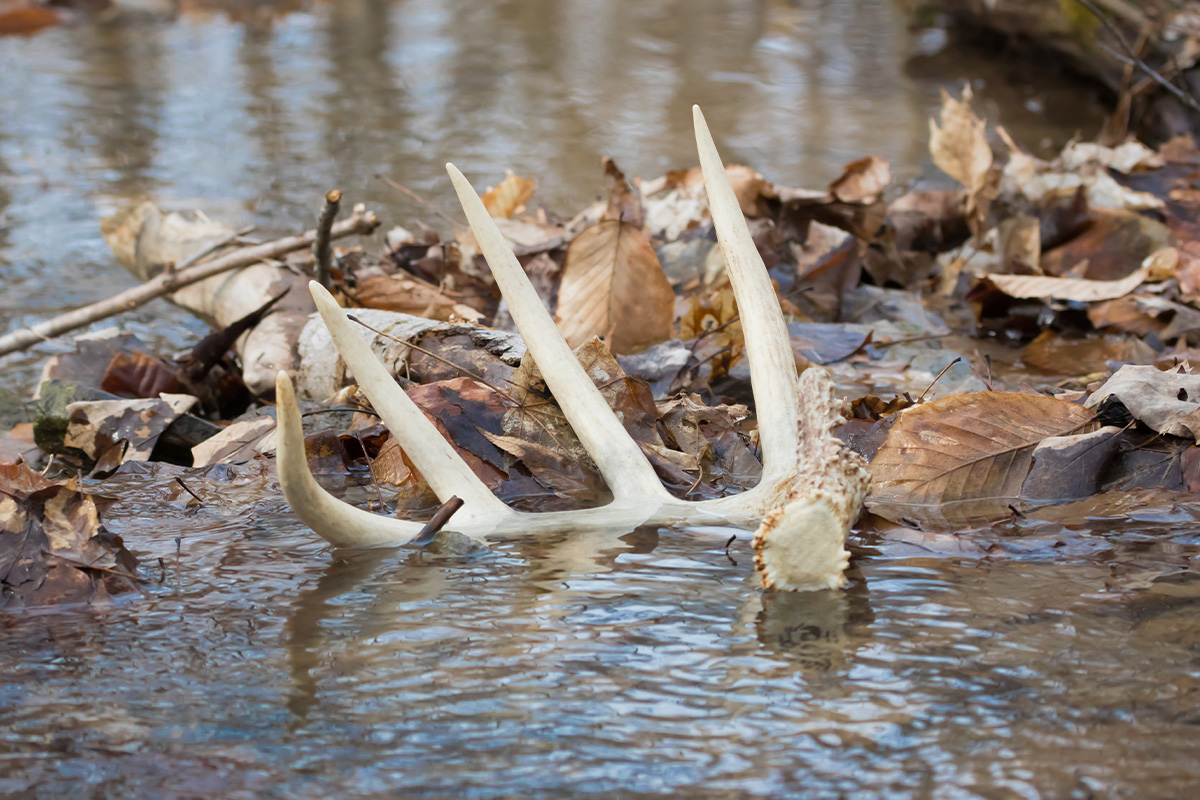
Properly timing the antler drop is essential to maximizing your time spent shed hunting. Photo by JasonYoder, Shutterstock
Shed hunting is an ever-growing activity throughout America. It’s so popular that even non-hunters participate in it. But not all who do understand the ins and outs of the activity, including the details surrounding the timing of the antler drop. Of course, this is an integral component of being successful.
As with many things in the animal kingdom, photoperiod is a driver of certain whitetail processes. That includes antler casting, in part. As daylight lengthens, testosterone also begins to drop, which is the ultimate trigger for antler shedding. It’s the exact opposite process of how deer antlers harden in late summer.
Region and timing of the rut are also factors. In the North, a defined rut means a shorter breeding window. In the South, a longer rut means a prolonged breeding window. Because of these factors, mature northern bucks tend to shed first, followed by younger-age-class deer. In contrast, southern deer herds are opposite. Younger bucks shed first, followed by mature bucks.
Buck-to-doe ratio is another deciding factor. In areas where the ratio is more skewed, and the breeding drags on, bucks in such situations routinely carry their antlers longer. This is due to testosterone levels remaining elevated for a lengthier duration.
The habitat type has a significant impact on the timing of the antler drop, too. Naturally, areas with better winter food sources and better winter bedding cover tend to have healthy herds. Deer in better habitat with elevated nutrition typically experience a later antler drop than those in poorer habitat with fewer and lesser food sources.
For example, several properties that I hunt are surrounded by big agriculture. Another is all big timber, without any ag around it. Generally, the big-timber deer herd casts antlers from late December to mid-February. The other properties tend to do so from early January to mid-March.
Barring significant environmental differences, individual bucks tend to shed at similar times from one winter to the next. Oftentimes, it’s down to the same 48- to 72-hour window. This suggests that genetics play an important role in the antler drop.
Expected generalities aside, there are certain early drop outliers. While some early droppers (in relation to the greater herd) are genetically inclined to do so, other factors are more often the cause. This list includes disease, injury, old age, unusually harsh winters and nutritional stress.
Unless regulations keep shed hunters from starting sooner, not all shed hunters should wait super late to shed hunt. Some deer will shed earlier. In fact, while it might take until these later dates for the bulk of the herd to drop, some will lose their headgear much sooner. Consider shed hunting in low-pressure areas, such as open food sources, earlier in winter. Wait until later in the antler drop cycle to push into higher-pressure areas, such as bedding areas. Of course, public land areas and private land shared with other hunters might require sooner searches to beat the crowds.
To help gauge how far along deer are in the antler drop, consider glassing from afar. I just did this about 10 days ago in Kentucky. The sample size consisted of eight bucks. That effort revealed that about 50% of the local herd had shed.
Of course, the best and most effective method for timing the antler drop is by running cellular trail cameras. Posting these in high-use wintertime areas is a solid method for determining how far along deer are in this process.
So, for the big question—when do most bucks generally shed? And when should shed hunters start searching for white gold? That answer is different everywhere. Still, western deer typically shed very early, but many of these states have shed hunting start dates. For northeastern, midwestern and mid-southern states, 90 percent of sheds should be on the ground by the first of March. In southern states, 90 percent should be shed by the beginning of April. All being said, late February to mid-March is the best timeline to search for sheds in the northern half of the country. Mid-March to mid-April is the best time to shed hunt in the southern half.











































